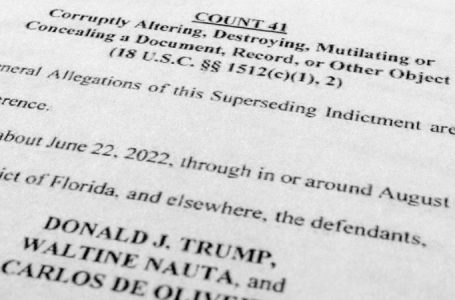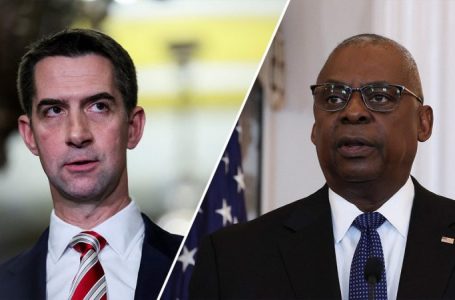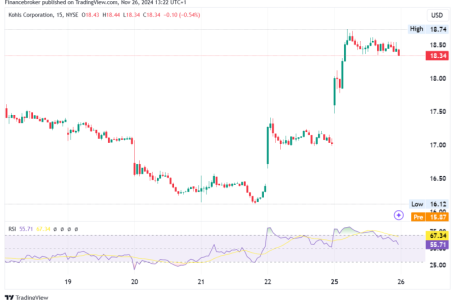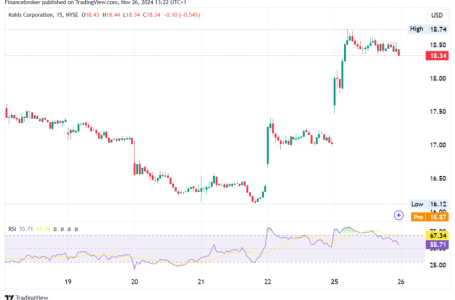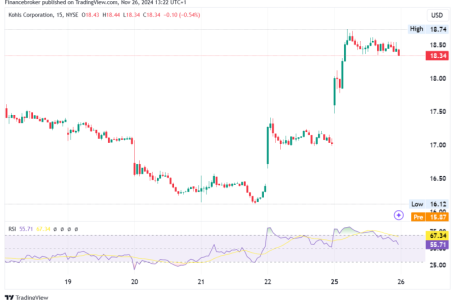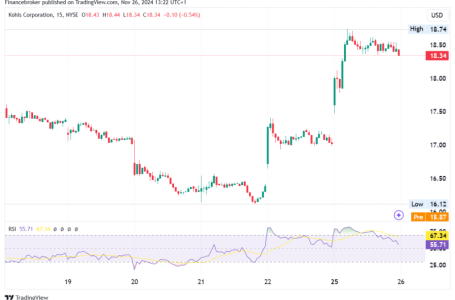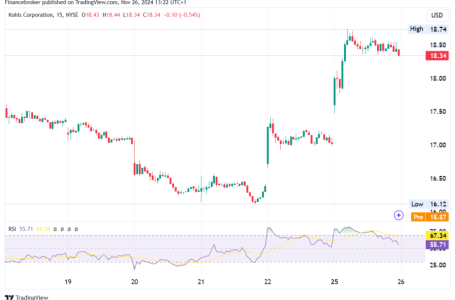Bitcoin Price Hits All-time High as Trump Wins US Presidential Election
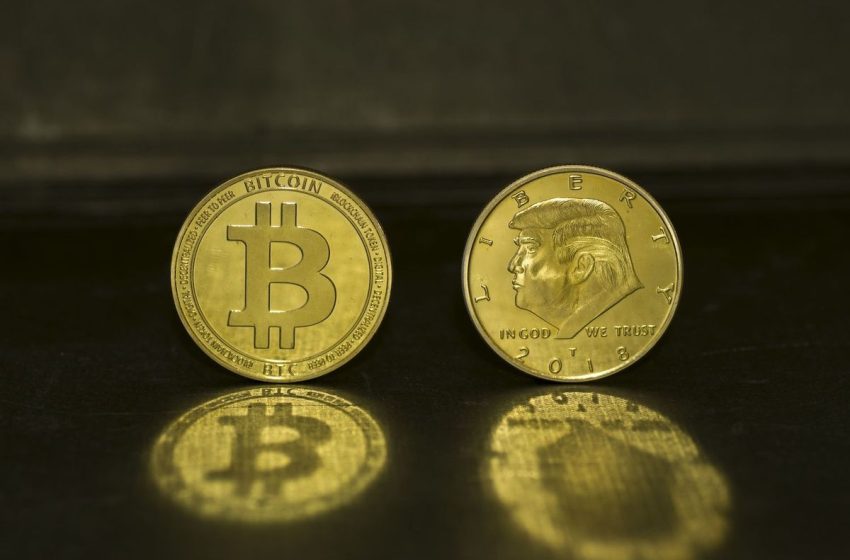
Popular cryptocurrency Bitcoin surged to a new record of more than US$75,000 as the US election played out.
Outcomes in Pennsylvania and Wisconsin, two of seven key battleground states, had a key role in securing Republican nominee Donald Trump’s victory, which was announced at around 5:30 a.m. EST on Wednesday (November 6).
Bitcoin was valued at US$73,806 when the news hit, reflecting a nearly 7 percent increase in a 24 hour period.
The Republican Party’s success ultimately extended to all seven swing states. Moreover, the party took control of the Senate by flipping seats in Ohio, West Virginia and Montana. Control of the House has yet to be determined.
Throughout the election process, Bitcoin’s price movements appeared to increasingly be influenced by the presidential race, making this event an intriguing case study of the links between cryptocurrencies and politics.
Trump’s crypto push vs. Harris’ regulatory plans
The price of Bitcoin experienced significant volatility leading up to the election.
Over the course of his campaign, Trump actively courted the crypto community, securing endorsements from crypto super PACs and garnering support from voters invested in the industry’s future.
Trump spoke at the Bitcoin conference in Nashville, Tennessee, in July, promising to establish a Bitcoin reserve and make the US the “crypto capital” of the world if he was elected. He has also been a vocal critic of US Securities and Exchange Commission Chair Gary Gensler, whose tenure has been marked by a contentious relationship with the crypto industry and multiple legal battles against major players like Kraken, Ripple and Tether.
At the Nashville event, Trump pledged to replace Gensler with a new chairman if he won the presidency.
In mid-September, Trump launched a family crypto venture called World Liberty Financial along with a native token, announcing an initial fundraising goal of US$300 million. However, due to slower-than-expected adoption, the organization reduced that target to US$30 million just five days before the election.
Meanwhile, Democratic nominee and current Vice President Kamala Harris promised to support the crypto industry, vowing to oversee the development of a complete regulatory framework just weeks before the election.
The initiative was part of her Opportunity Agenda, which sought to establish tools and resources for economic advancement within Black male communities; however, her campaign’s messaging on these policies lacked clarity, and the Democratic Party’s overall stance has been perceived by some as hindering innovation in the crypto space.
As the political landscape evolves and the new administration takes shape, it is crucial to consider how Trump’sstances and potential policies may influence the future of the cryptocurrency industry.
Matt Hougan, CEO of Bitwise Asset Management, a crypto index fund manager, thinks cryptocurrency prices will continue to trend upward in the long term regardless of the outcome of the election.
“What happens in Tuesday’s election matters, particularly in the short term. But as I see it, over the long term Tuesday will prove to be something between a speed bump and a wind gust. Neither is going to stop this train,’ he said.
Antonio Di Giacomo, senior market analyst at global multi-asset broker XS.com, said ahead of the vote that US elections have historically coincided with a significant growth pattern for the Bitcoin price.
“While the cryptocurrency has historically been volatile, the post-election surges in 2016, 2020 and more recently in 2024 reflect an upward trend that has attracted investors worldwide,” he said via email.
“However, while Bitcoin has historically seen significant price appreciation following elections, the exact cause of this relationship is unclear; it is likely due to a combination of economic, political and technological factors.”
Bitcoin surges to new high in election-fueled rally
Bitcoin fluctuated in value leading up to the election. After weeks of stagnancy, Trump’s perceived chances of winning increased, helping Bitcoin break above US$70,000 on October 28 for the first time since June.
However, it pulled back shortly after due to profit taking as well as a dismal US jobs report on November 1.
On November 2, a Des Moines Register/Mediacom survey of 808 Iowa voters showed Harris leading Trump 47 percent to 44 percent among independent likely voters, a demographic that had supported Trump in his last two races.
As the perceived odds of Harris winning increased, so-called “Trump trades,” including Bitcoin, experienced declines. On November 4, Bitcoin fell to US$67,393, marking its sixth consecutive day of losses.
Ahead of election day, Polymarket bets heavily favored Trump, although reports suggested that these figures might not accurately reflect voter sentiment. Data from other sources, including FiveThirtyEight, indicated a much tighter race, with Harris holding a slight lead throughout October. Similarly, the Silver Bulletin’s 80,000 election simulations predicted a near tie, with Harris winning in 50.015 percent of the scenarios and Trump winning in 49.985 percent.
The tiny town of Dixville Notch in New Hampshire upheld its traditional role in kicking off voting day with a remarkable result: Trump and Harris received an equal number of votes, with each candidate securing three votes apiece.
As voting continued around the country, the Bitcoin price gained roughly 2.3 percent in 24 hours, breaking US$70,000 at around 12:00 p.m. EST on November 5. Its volatility was on full display throughout the afternoon and into the night as results trickled in, largely in Trump’s favor. As Trump took an early lead, Bitcoin continued to climb, rallying over 6 percent between 7:00 p.m. and 10:20 p.m. EST to reach US$73,936, breaking its March high of US$73,000.
In a historic moment, Bitcoin soared to an all-time high of US$75,258 at 1:25 a.m. EST on November 6 as votes were tallied in Nevada. Trump was declared the winner at around 5:36 a.m. EST after securing 10 electoral college votes in Wisconsin. Bitcoin was valued at US$73,806, an increase of nearly 7.5 percent over 24 hours.
Comparing the cryptocurrency’s performance during the 2016 and 2020 US elections to its recent behavior reveals a stark contrast. In 2016, Bitcoin experienced a relatively modest 1.13 percent change around the election period. Conversely, in 2020, despite a relatively flat year, Bitcoin saw a difference of 10.29 percent as the votes were tallied.
While both the 2016 and 2020 elections showcased Bitcoin’s potential for growth, the recent election cycle has emphasized its growing influence and its susceptibility to the shifting political winds.
Investor takeaway
The relationship between Bitcoin and the US election has been complex and multifaceted.
The market’s response to the election outcome may be emotionally driven in the short term, but the long-term prospects for cryptocurrencies hinge on the regulatory environment fostered by the new administration.
Neil Bergquist, CEO and co-founder of Coinme, echoed this sentiment, emphasizing that regulatory clarity and support from the incoming administration will not only boost the industry, but also attract new participants.
‘This would drive trading volumes and the value of crypto upward, following increased market participation. It would also attract more institutional investors to the market, which historically drives up volumes and values of crypto.’
Ultimately, the crypto industry and retail investors alike are looking to the new president for a more embracing approach to digital assets, and also for much-needed regulatory clarity.
Securities Disclosure: I, Meagen Seatter, hold no direct investment interest in any company mentioned in this article.
